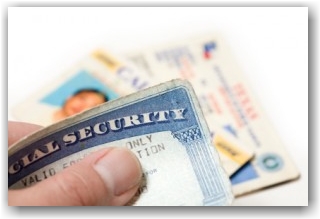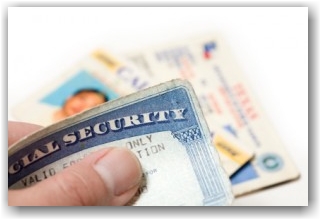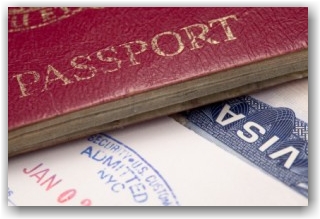Archive for the ‘Department Of Labor (DOL)’ Category
Wednesday, January 15th, 2014
 There are certain classes of non-profit employers who are exempt from the H-1B cap. The exemption from the cap only applies to institutions of higher education, non-profit research institutions, government research institutions, and non-profits formally affiliated with an exempt educational institution. Let’s discuss this.
There are certain classes of non-profit employers who are exempt from the H-1B cap. The exemption from the cap only applies to institutions of higher education, non-profit research institutions, government research institutions, and non-profits formally affiliated with an exempt educational institution. Let’s discuss this.
Institutions of higher education: Under the definition, an institution of higher education is one which:
- admits students who have completed secondary education;
- is licensed to provide education beyond secondary school;
- provides educational programs for which the institutions award bachelors’ degrees or provide programs of not less than 2 years that are acceptable for full credit toward bachelors’ degrees;
- is a public or nonprofit institution; and
- is accredited or has been granted pre-accreditation status by a recognized accrediting agency.
What does it mean to be related or affiliated to a higher education institution nonprofit entity?
The USCIS states that it is sufficient that a nonprofit entity is related or affiliated to an institution of higher education through shared ownership, control or be somehow affiliated to the higher education institution as a member, branch or subsidiary.
This narrow definition makes the types of non-profits that qualify for this exemption few and far between. For instance, non-profit service, community, policy and arts organizations would not qualify for the exemption from the H-1B cap. Unless the non-profit employer is primarily devoted to research, or is formally affiliated with a university, it will not qualify as a cap-exempt H1B petitioner. Public secondary schools do not qualify for H1B cap-exemption unless they have a formal affiliation agreement with a college or university. However, the exemption does cover certain professionals employed by a for-profit entity but but does when working at an exempt location, as long as the work continues to serve the core mission of the exempt institution, such as a physicians’ practice group affiliated with and located at a university teaching hospital.
Nonprofit Research Organizations | Government Research Organizations: Nonprofit research organizations or governmental research organizations, are defined in 8 CFR 214.2(h)(19)(iii)(C), as follows:
- A nonprofit research organization is an organization that is primarily engaged in basic research and/or applied research.
- A governmental research organization is a United States Government entity whose primary mission is the performance or promotion of basic research and/or applied research.
Basic research is general research to gain more comprehensive knowledge or understanding of the subject under study, without specific applications in mind. Basic research is also research that advances scientific knowledge, but does not have specific immediate commercial objectives although it may be in fields of present or potential commercial interest. It may include research and investigation in the sciences, social sciences, or humanities.
Applied research is research to gain knowledge or understanding to determine the means by which a specific, recognized need may be met. Applied research includes investigations oriented to discovering new scientific knowledge that has specific commercial objectives with respect to products, processes, or services. It may include research and investigation in the sciences, social sciences, or humanities.
Conclusion
It should be noted that all of the criteria above must be met in order for an institution or an organization to qualify for a cap-exempt status for H-1B purposes. Such institutions and organizations can indicate that their H1B filing is cap exempt by marking Form I-129 (Petition of Non-Immigrant Worker) with a “yes” answer to questions 1, 2, or 3 in Part C of the H1B Data Collection and Filing Fee Exemption Supplement. Bear in mind that an employer or a foreign national who wishes to seek H-1B status under a cap-exempt petition must verify that they qualify for the cap exemption under one of the three categories above. It is recommended that you work with an immigration practitioner that understands this casework as the analysis is often complex. If you’d like to become a client of our office, please contact us at info@immigrationcompliancegroup.com or call 562 612-3996.
Tags: Department Of Homeland Security (DHS), DOL, H-1B Exempt Employers, H-1B NonProfits, H-1B Professionals, H-1B Visas, Immigration News, Labor Condition Application, LCA, Specialty Occupation, USCIS
Posted in Department Of Homeland Security (DHS), Department Of Labor (DOL), H-1B Visas, Immigration News, USCIS | Comments Off on Who are H-1B Exempt Employers?
Sunday, January 5th, 2014
 DHS/ICE continues to issue Notices of Intent to Fine (NOFs) at an unprecedented rate for Form I-9 related infractions. Mistakes occur in the I-9 process, it’s inevitable. While establishing a written compliance policy, training and careful prevention is the best approach. All employers should take time at the beginning of each year to conduct an internal audit and self-examination of their systems, operating procedures, and past and present practices for handling I-9s, as well as to access training needs for the employees charged with handling and supervising the I-9 process. We also recommend that you review your E-Verify submissions, as well as revisiting just how compliant your I-9 software really is with your vendor if you are using an electronic system.
DHS/ICE continues to issue Notices of Intent to Fine (NOFs) at an unprecedented rate for Form I-9 related infractions. Mistakes occur in the I-9 process, it’s inevitable. While establishing a written compliance policy, training and careful prevention is the best approach. All employers should take time at the beginning of each year to conduct an internal audit and self-examination of their systems, operating procedures, and past and present practices for handling I-9s, as well as to access training needs for the employees charged with handling and supervising the I-9 process. We also recommend that you review your E-Verify submissions, as well as revisiting just how compliant your I-9 software really is with your vendor if you are using an electronic system.
While there are many checklists and do-it-yourself guides and webinars available on the Internet and elsewhere, consulting a licensed attorney or specialist in the field who is familiar with I-9 and E-Verify compliance issues can save employers hours of research, provide a solution tailored to your organization, and save you thousands of dollars in fines and penalties should ICE knock on your door.
When ICE notifies an employer of their intention to perform an audit, it opens the door for an onslaught of inquiries and investigation from other government agencies that range from SSA mis-match issues to Department of Labor (DOL) wage and hour, USCIS, IRS, and more if you have areas of incompliance in your operating procedures. This is not the time during an audit when under pressure to clean up compliance problems.
New employers are often more at risk because many are not even aware of the I-9 requirement, and probably are also unaware of the need for all employees to complete the I-9 Form. Some are aware, but they lack knowledge concerning the regulations that govern the form; such as, timeframes, acceptable documents, form retention, and other important details that are integral to the process. Particularly, there are problems with industries such as IT consulting, healthcare, staffing agencies, and other organizations with multiple locations in regard to completing the I-9-Form remotely with the employer’s designated agent and employee in different locations.
These are just a few reasons why we urge you to assess the strengths and weaknesses of your present compliance program, and start the New Year fresh with a renewed commitment to implement best practices that will provide the foundation upon which you can develop and maintain a more compliant business and workforce.
You might be interested in joining our LinkedIn group, I-9/E-Verify: Smart Solutions for Employers,” and signing up to receive via RSS feed or email our Blog posts.
Tags: +, Department Of Homeland Security (DHS), DOL, E-Verify, I-9 AUDIT, I-9 Best Practices, I-9 Comipliance, I-9 Form, I-9 Training, I-9/E-Verify News, ICE, Immigration News, Legal Workforce, OSC, SSA
Posted in Department Of Homeland Security (DHS), Department Of Labor (DOL), Employer Compliance, Healthcare, I-9/E-Verify News, ICE, Immigration News, OSC, Social Security, Staffing Agencies, USCIS | Comments Off on Compliance Audits are Recommended for Employers at the Beginning of the New Year
Friday, January 3rd, 2014

The H-1B visa category is one of the most used visa classifications by US employers and is available to professionals that will work in a specialty occupation that generally requires a minimum of a bachelor’s degree or its equivalent.
Last year, the number of H-1B visa petitions filed in the first 5 days exceeded the entire H-1B visa allotment. Hundreds of employers were unable to hire all the foreign-based professional talent that they required, and their petitions went into a lottery pool, left to chance and uncertainty.
Given that we are seeing improvements in the economy, it is anticipated that this filing season will be the most competitive one in many years. Just to review…There is a limit of 85,000 H-1B visas available each fiscal year, 20,000 of which are reserved for individuals who have graduated with an advanced degree (a master’s or higher degree) from a US college or university that is accredited by a nationally recognized accrediting agency or association. Pre-accreditation status is also acceptable. Secondly, the school must be a public or other nonprofit institution. If these requirements are not met, the candidate will not qualify for the master’s degree exemption. It is also to be noted that employers stand a stronger chance obtaining advanced degree petition approvals, even if the position being offered only requires a bachelor’s degree or its equivalent.
Our position is that it’s just not too early to start assessing where you’d like to add personnel and to start working with your immigration provider on such important matters as:
1) Credential evaluations for prospective employees with foreign degrees
2) Thorough job descriptions indicating the percentage of time spent on core areas of the position
3) Needed updates to your corporate stats and profile information
4) Updating intake questionnaires for H-1B employees
5) For new employers who have previously not filed H-1Bs and are not in the databases accessed by government agencies, be prepared for a request to submit to the Department of Labor iCERT system for Labor Condition Applications (LCA) a copy of your IRS letter confirming your EIN number. It is also not unusual for them to request your corporate formation documents before they will certify your LCA. H-1B petitions will be denied if not accompanied by a certified Labor Condition Application. It might be advisable to file your LCA’s in late January or February even though this will shorten a few months from the 3-year initial approval.
If the prospective employee is a national of Canada, Mexico, Australia, Singapore or Chile you have other options to consider. Canadian and Mexican professionals qualify for TN status (pursuant to Trade NAFTA). You can file anytime of the year under this classification; there are no quotas, applicants can apply right at the border, and the 3-year period of stay can be extended indefinitely. Here is a link to the list of occupations that qualify for TN classification.
Australian nationals are eligible for E-3 status in 2-year increments and can consular process their applications, with unlimited extensions available. A Labor Condition Application is required for these cases. Nationals from Singapore and Chile qualify according to Free Trade Agreements for the H-1B1 classification. There is a quota for this category that has never been reached.
If you are contemplating the hire of a professional who currently holds H-1B status with another employer, they are exempt from the quota and can start working for you immediately even though the petition is pending approval.
We encourage employers to call us with any questions that you might have or if you’d like to retain our firm to handle your H-1B filings. Our email: info@immigrationcompliancegroup.com or by phone 562 612.3996.
Tags: 2015 H-1B Filing Season, CBP, Consular Processing, DOL, E-3 Visas, Employment Visas, H-1B Cap, H-1B Visa, H-1B1 Visas, Immigration News, Labor Condition Application, Nonimmigrant Visas, Specialty Occuations, tn, USCIS
Posted in Canada, Customs & Border Protection(CBP), Department Of Labor (DOL), H-1B Visas, Immigration News, TNs, US Consulates, USCIS | Comments Off on It’s Beginning to Look A lot like H-1B Filing Season 2015!
Thursday, October 31st, 2013

Infosys is India’s second largest software exporter, and has about 30,000 workers in the U.S. (160,000 worldwide) with $6B in sales.
After years of investigation, it was found that Infosys “knowingly and unlawfully” brought Indian workers into the United States on B-1 business visitor visas( since 2008), to circumvent the higher costs and delays of a longer-term employment-related visa, such as the H-1B visa that the workers should have had. It was found that Infosys systematically submitted misleading information to US immigration authorities and consular officials to obtain the B-1 visas that do not permit employment, unfairly gaining a competitive edge and undercutting American workers qualified for the jobs
Press release states: “Infosys failed to maintain I-9 records for many of its foreign nationals in the United States in 2010 and 2011 as required by law, including a widespread failure to update and re-verify the employment authorization status of a large percentage of its foreign national employees…more than 80 percent of Infosys’s I-9 forms for 2010 and 2011 contained substantive violations.”
The largest fine of its kind, was paid out as follows: $5 million to Homeland Security Investigations, $5 million to the Department of State, and $24 million to the DOJ.
How can employers protect themselves?
The five federal agencies charged with workplace enforcement are not only going after businesses that are known to employ undocumented workers, but they are also making examples out of industry leaders across the country creating headline news. It goes without saying, that this is now a topic that should be on HR executives’ action list. Turning a blind eye can be exceedingly costly and cause great damage to a company’s reputation.
For more on this Story: CBS Reports NY Times
For more on our services and solutions
Tags: B-1 Visa, Business Immigration, DOL, H-1B Visa, HSI, I-9 Violations, I-9/E-Verify News, ICE Audit, ICE Investigation, ICE NOI, Indian IT Industry, Infosys, Legal Workforce, Skilled Professionals, Specialty Workers, SSA, US Consulates, USCIS, Visa Fraud
Posted in Department Of Homeland Security (DHS), Department Of Labor (DOL), Department of State, Employer Compliance, H-1B Visas, I-9/E-Verify News, ICE, Immigration News, Social Security, USCIS | Comments Off on Infosys to pay $34M in Fines for Visa Fraud and I-9 Violations
Thursday, October 10th, 2013

On June 15, 2012, President Obama signed a memo calling for deferred action for certain undocumented young people who came to the U.S. as children and have pursued education or military service here. Applications under the program which is called Deferred Action for Childhood Arrivals (“DACA”) began on August 15, 2012. Individuals that meet particular criteria, are awarded employment authorization (a/k/a an “EAD Card”) by USCIS.
USCIS does not alert employers when EAD cards have been issued to existing employees, and the employee is under no obligation to present the document to the employer. However, should they do so, the employer is obligated to examine the document.
The Attached Fact Sheet identifies the employer’s obligations during the Form I-9 process and provides specific guidance to employers on the treatment of EADs issued by USCIS to DACA recipients, whether they be current employees who come forward on their own, or new hires.
Note that DACA guidance does not direct employers to perform E-Verify queries on current employees who present DACA work authorization. Rather, it states that employers should complete a new Form I-9 and perform an E-Verify query in certain situations involving material changes to identity information. More on this topic can be found in the new M-274 Handbook on pages 23-24.
Should you like to become a client of our office or have particular questions pertaining to this topic, please feel free to contact us.
Tags: DACA, DACA EAD Cards, DACA Fact Sheet, DOL, E-Verify, EAD Employment Authorization, I-9 AUDIT, I-9 Form, I-9 Reverification, I-9 Training, I-9/E-Verify News, ICE, Immigration News, Legal Workforce, M-274, OSC, SSA, USCIS
Posted in DACA | DAPA, Department Of Homeland Security (DHS), Department Of Labor (DOL), Employer Compliance, I-9/E-Verify News, ICE, Immigration News, OSC, Social Security | Comments Off on Form I-9 Processing for DACA Recipients
Thursday, March 14th, 2013

A new edition of the I-9 employment eligibility verification form was introduced last week. USCIS has been working on the revised I-9 form for more than a year. The revised M-274 Handbook for Employers can be accessed at the same link. Many areas on the I-9 Central website have also been updated. Note the webinar schedule for the new form.
The new edition of the I-9 Form, dated March 8, 2013, will take effect immediately on publication and will become the only acceptable version of the form. Employers who need to make necessary updates to their business processes to allow for use of the new Form I-9 may continue to use other previously accepted revisions (Rev.02/02/09)N and (Rev. 08/07/09)Y until May 6, 2013. Effective May 7, 2013, all employers must use the revised Form I-9 for each new employee hired in the United States. Employers who are not using the I-9 form following the 60-day grace period will be subject to fines and penalties under 274(a) of The Act (The Immigration and Nationality Act), IRCA, as well as ICE.
The revised Form I-9 has several new features, including new fields and a new format to reduce errors, and more clearly describes the information employees and employers must provide in each section. The instructions to the form are now 7 pages in length, and we recommend that you provide the instructions and the list of documents to your new employees to refer to during the process. The form looks much more official and now displays the DHS seal at the top left of the form with space built in to eventually implement future barcode technology. Helpful new images have been added to the M-274 Handbook to illustrate how employees and employers can complete Sections 1-3 of the new form. Please also see page 23 for updated guidance on recording changes of name and other identity guidance.
In the USCIS Stakeholder conference held on March 11, 2013, many of the questions centered around the following topics that we thought might be helpful to share with you, as follows:
- Do I need to fill out a new I-9 forms for all employees? You do not need to do new I-9 forms for those employees who already have one.
- When to accept receipts: Receipts for initial employment or renewal (during reverification) of employment are not acceptable. There are 3 different documents that qualify as receipts are: (a) Receipts may be presented for sections 2 and 3 if the document was lost, stolen or damaged; the receipt is valid for 90 days. (b) Temporary I-551 (a printable notation on a machine-readable immigrant visa inside a foreign passport). This is a 1-year permanent residency stamp for a foreign national that has received permanent status abroad. The Form I-551 (permanent residency card) must be presented prior to or no later than the expiration stamp inside the passport. (c) An I-94 entry card with an unexpired refugee stamp. This is considered a receipt for an Employment Authorization Document (EAD card), or a combination of an unrestricted Social Security Card and a List B document and is valid for 90 days.
- Rehires and Reverifications: If you are rehiring an employee who completed an I-9 form within 3 years, you can continue to use the existing I-9 form, and record any name changes, the rehire date and other required information in Section 3 and change the date of hire in Section 2 (initial/date). If their work authorization as changed you can make the correction on the existing form if still valid or generate a new form I-9 and fill in Section 3 and attach to the old form. As a reminder, do not reverify US citizens, permanent residents, conditional residents, asylees with unrestricted work authorization and List B identity documents such as driver’s licenses and state ID cards.
- The use of notaries: Notaries are “designated agents” of the employer. They should not imprint their notary stamp on any I-9 documentation or attach same to the I-9 form. The employer is responsible for their actions and any violations relating to Form I-9. Photocopies of I-9 forms are also not acceptable from Notaries. A notary or any other designated agent appointed by the employer must examine the original documents presented to them and thoroughly complete and sign section 2 of the form and return the original to the employer, along with photocopies of the presented documents should this be a company policy.
- Recording social security numbers: On the List of Acceptable Documents for List C, Social Security card restrictions are explained to better assist in examination of the document. Note that individuals with temporary work authorization are issued restricted social security cards that indicate: “Not valid without USCIS/DHS work authorization
- Recording the date of hire in Section 2: When an offer of employment is extended and accepted but the employee has not yet started, the I-9 may be completed using that date instead of the ‘actual’ start date of employment. You may then go back into the form and adjust the date to the actual start date (the 1st day of work for pay). Recruiters or recruiters for a fee are not required to enter the employee’s first day of employment. However, you may enter the first day the employee was placed in a job pool after an offer of employment and acceptance.
- Must employee present documents that correspond to box checked in Section 1? No, employers may not insist on viewing any particular documents. However, if information is recorded in section 1 that puts the employer “on notice” that work authorization may be expiring, you are required to track that date and follow-up with the employee concerning their continued work authorization.
USCIS has indicated that a good place to begin implementing the use of the new I-9 form is to take time to first thoroughly read and digest the revised M-274 Handbook for Employers. Download it from the USCIS website and provide a complete copy to each and every employee charged with processing and managing the I-9 function at your place of employment to ensure that they are aware of the changes and are equipped to properly implement them. Update your company policies to reflect the changes in the form.
For those of you who manage your I-9 forms via an electronic software vendor, this is absolutely the right time to have a conversation with them concerning their compliance with the new form and make sure that it complies with all pertinent rules and regulations for I-9 electronic software . This is also an excellent time to think about additional training for your staff. Refer here for our services and solutions.
To order copies of the new I-9 form from USCIS, you can call 1-800-870-3676.
Tags: Changes to new I-9 Form, Department Of Homeland Security (DHS), Department Of Labor (DOL), Employer Sanctions, Employment Eligibility Verification, Handbook for Employers, I-9 AUDIT, I-9 Form Penalties, I-9 Training, I-9/E-Verify News, ICE, Immigration News, Legal Workforce, M-274, New I-9 Form, Social Security, USCIS
Posted in Department Of Homeland Security (DHS), Department Of Labor (DOL), Employer Compliance, I-9/E-Verify News, ICE, Immigration Legislation, Immigration News, Social Security, Staffing Agencies, USCIS | Comments Off on New I-9 Form Update from Immigration Compliance Group
Tuesday, January 15th, 2013

There have been reports for some months now that the USCIS California Service Center has enforced new interpretation concerning the way it views H-1B requirements for job location changes, when duties and all other employment terms remain the same.
Previously, according to a 2003 legacy INS memo, a simple change in job location did not require that a new petition be filed with USCIS. The employer was required to analyze prevailing wage for the new location, file and obtain a new certified Labor Condition Application (LCA) with the Department of Labor prior to the employee moving to the new location, post the LCA at the new work site according to DOL regulations, make sure wage and hour obligations were met, but did not have to file an amended petition with USCIS.
Under the CSC’s new and controversial interpretation, changes in job location alone do require amended petitions. In fact, employers are reporting site audits and revocation of H-1B petitions when USCIS inspectors could not find the H-1B worker at the work site listed in the petition. At this point, no other USCIS service center has followed this radical reinterpretation of the law – just the CSC.
Long-standing guidance still indicates that no amended petition should be required when only job location changes. However, to avoid adverse consequences – at least, until the CSC revisits its controversial new interpretation – employers should proceed with caution and work with a competent immigration professional whenever an H-1B worker’s job location changes, in order to determine whether any amended filings are required. Employers need to be careful to reveal all possible jobsite locations for each H-1B worker at the front end of case processing.
USCIS headquarters has the H-1B amendment issue under consideration and has indicated that they may issue additional guidance regarding this matter. In the meantime, please be advised that for cases under the jurisdiction of the CA Service Center for H-1B workers whose jobsite locations have changed, an amended petition prior to any geographic relocation is now required.
Should you wish to become a client of our office, please contact one of our immigration professionals at info@immigrationcompliancegroup.com, or call 562 612.3996.
Tags: California Service Center, CSC, DOL, Employer Site Visits, Employment Visas, H-1B Amended Petition, H-1B Consultants, H-1B Jobsite Relocation, H-1B Posting Notice, H-1B Staffing Agencies, H-1B Visa, Immigraiton News, Labor Condition Application, LCA, Nonimmigrant Visas, Specialty Occupations, Specialty Workers, USCIS
Posted in Department Of Labor (DOL), Employer Site Visits, H-1B Visas, Immigration Legislation, Immigration News, Staffing Agencies, USCIS | Comments Off on H-1B Visa: California Service Center Enforces Radical Interpretation of H-1B Requirements for Job Location Changes
Friday, September 28th, 2012

The OSC announced today that they had reached an agreement with a janitorial and facilities management company in Florida that was fined for mishandling the TNC process with the employee. The employer was fined $8800 (back pay and civil penalties) and had to agree to training by the Justice Department on the anti-discrimination provision and training by the Department of Homeland Security on proper E-Verify procedures.
It is imperative that you follow appropriate TNC procedures and supply your employees with the required documentation so that they can resolve TNC issues. Sit down with them, show them the information that you input into E-Verify and make sure that it’s accurate. Provide them with the appropriate TNC notice and SSA or DHS referral letter. Here is an excellent training video that we recommend you use as a tool in your organization.
Check out our employer resource center here: www.I-9Audits.com and our services and solutions here: www-employer-compliance.com. Stay informed and sign up to receive our information.
Tags: Department Of Homeland Security (DHS), E-Verify, E-Verify Training, Employment Eligibility Verification, I-9, I-9/E-Verify News, ICE, SSA, Tentative Noncomfirmations, TNC
Posted in Department Of Labor (DOL), DOJ, Employer Compliance, I-9/E-Verify News, ICE, Immigration News, OSC, Social Security | Comments Off on E-Verify and TNC Resolution
Tuesday, July 10th, 2012
By: Timothy Sutton, Communications Editor
 One of my favorite television shows is Undercover Boss. If you’re unfamiliar with the show, the premise is: a CEO/President takes on a disguise to go undercover within their own business to find ways to (1) become more successful and (2) reward hardworking employees. Obviously, there is an essential element of Hollywood magic that prevents most of us from going “undercover” within our own business; but the lessons learned from this show are no less valuable.
One of my favorite television shows is Undercover Boss. If you’re unfamiliar with the show, the premise is: a CEO/President takes on a disguise to go undercover within their own business to find ways to (1) become more successful and (2) reward hardworking employees. Obviously, there is an essential element of Hollywood magic that prevents most of us from going “undercover” within our own business; but the lessons learned from this show are no less valuable.
Every episode begins with a slightly troubled, but optimistic executive. They instruct their trusted board of directors that they will be resigning from the company to go undercover as an employee over a week’s time in various lower levels of the company, entry-level to management. The goal is to see their business from a fresh perspective. A series of uncomfortable and often illegal encounters ensue where CEOs face discrimination, harassment and even get fired by their own employees. At the end of the hour-long television program, CEOs reward key employees and have “new and improved tools” to develop successful business practices.
There is a better way for your business to experience the same fresh perspective without shaving your head and slapping on a boar’s hair mustache; it’s called an audit. Yes the feared “audit” is most commonly associated with frightful agencies like the IRS and ICE. Yet, Undercover Boss is simply Hollywood’s version of a voluntary audit. In order to become more successful, discovering discrimination, harassment, and wrongful termination within your own business is necessary. The alphabet agencies (ICE, IRS, DOJ, DOL) insist that companies perform annual audits to comply with a multitude of legal formalities. Not only will audits improve business efficiencies and reveal valuable employees, but it will also save your company thousands of dollars for failing a government ICE initiated audit.
The Immigration Compliance Group has years of auditing and consulting experience and a touch of Hollywood magic! Before you invest in your own set of wigs and costumes, contact one of our immigration professionals to discuss I-9 compliance and workforce related issues. Discover how audit prevention and a fresh set of eyes can improve your business. Contact us for support in planning and implementing legally sound solutions to protect your company’s future: 562 612.3996 | info@immigrationcompliancegroup.com.
Link up with us in our group, I-9/E-Verify: Smart Solutions for Employers and stay informed: http://www.linkedin.com/groups?about=&gid=4137860
Tags: Business Solutions, I-9 Audits, I-9 Form, I-9/E-Verify News, ICE Audit, ICE Fines and Penalties, Immigration News, Legal Workforce, Undocumented Workers, WORKSITE COMPLIANCE
Posted in Department Of Homeland Security (DHS), Department Of Labor (DOL), DOJ, I-9/E-Verify News, ICE, Immigration News | Comments Off on Undercover Boss: Preventative Medicine for Businesses | Immigration Compliance Group
Monday, February 27th, 2012
 With H-1B filing season upon us as of April 2, 2012, we take this opportunity to remind you that although there has been slow but steady economic recovery over the last few years, the H-1B cap is expected to be reached much faster this year. This, coupled with a recent NFAP Policy Report Analysis released this month citing case denial rates of 17% with a staggering RFE (Request for Evidence) rate of 36%, sends a clear, “culture of no” message that USCIS is making it more difficult for skilled foreign nationals to work in the USA with increasing denial rates for both the H-1B and L-1 visa programs. All the more reason to be relying on experienced business immigration council for your case filings.
With H-1B filing season upon us as of April 2, 2012, we take this opportunity to remind you that although there has been slow but steady economic recovery over the last few years, the H-1B cap is expected to be reached much faster this year. This, coupled with a recent NFAP Policy Report Analysis released this month citing case denial rates of 17% with a staggering RFE (Request for Evidence) rate of 36%, sends a clear, “culture of no” message that USCIS is making it more difficult for skilled foreign nationals to work in the USA with increasing denial rates for both the H-1B and L-1 visa programs. All the more reason to be relying on experienced business immigration council for your case filings.
The NFAP report states, “Employers report the time lost due to the increase in denials and Requests for Evidence are costing them millions of dollars in project delays and contract penalties, while aiding competitors that operate exclusively outside the United States beyond the reach of USCIS adjudicators and U.S. consular officers.”
Small to medium-size companies and IT consultants and staffing agencies often bear the burden of these overbearing RFE’s. Working with smart immigration practitioners and preparing your case strategy in advance to address both your strengths and weaknesses, will pay off greatly. Here are some tips that we highly recommend be incorporated in your filings:
1) Incorporate a detailed brochure and description of the employer’s products or services and why you require a professional with a bachelor’s degree to perform the offered position. Include promotional materials, press releases or news articles to illustrate the nature of the business, new trends and growth factors in your business that substantiate the offered position.
2) Include a copy of your corporate tax return or financial statements to evidence profit and business stablity
3) Explain in detail why the position cannot be performed by an employee without a bachelor’s degree; i.e. is it standard in your industry? Provide detail (such as examples of work to be done) concerning the complexity of the position
4) Provide a real, detailed job description with the percentage of time spent on the duties of the position, the qualifications and special skills required to perform the job. Further explain any discretionary judgment that the employee will have in their job and other such areas of responsibility that are demanding or highly advanced
5) Provide evidence that you have a current and past practice of hiring bachelor’s degree employees for the subject position
6) IT and staffing agencies must be prepared to evidence the “employer-employee relationship” in H-1B offsite placement work situations by clearly evidencing the employer’s ability to “hire, pay, fire, supervise, or otherwise control the work of the employee. (based upon the January 8, 2010 Neufeld Memorandum).
If you’d like to set up a time to discuss your case with our office or to engage our services, please feel free to contact us.
Tags: DOL, F-1 Students, Global Mobility, H-1B, H-1B Job Descriptions, H-1B Visas, IT Consultants, L-1 visas, NFAP Policy Report, Specialty Workers, Staffing Agencies, USCIS
Posted in Department Of Homeland Security (DHS), Department Of Labor (DOL), H-1B Visas, L-1 Visa, Staffing Agencies, USCIS | Comments Off on Tips for H-1B Visa Petition Approvals
![]() There are certain classes of non-profit employers who are exempt from the H-1B cap. The exemption from the cap only applies to institutions of higher education, non-profit research institutions, government research institutions, and non-profits formally affiliated with an exempt educational institution. Let’s discuss this.
There are certain classes of non-profit employers who are exempt from the H-1B cap. The exemption from the cap only applies to institutions of higher education, non-profit research institutions, government research institutions, and non-profits formally affiliated with an exempt educational institution. Let’s discuss this.







